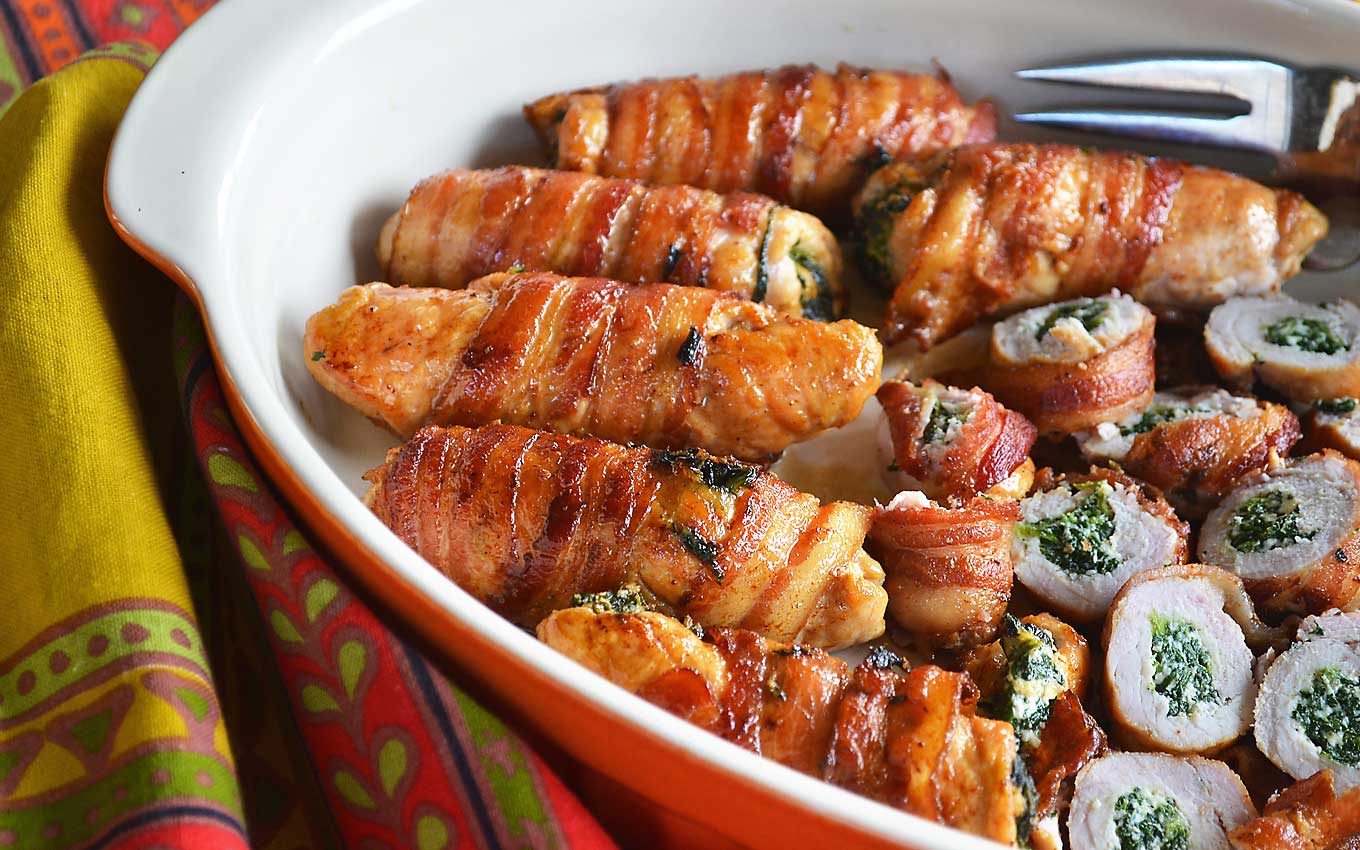
I know…it’s almost unfair…wrapping bacon around a slice of pork. Porcine overkill, perhaps? (No pun intended on the poor little fellows, mind you.) The bacon is there not just to titillate your taste buds though, it also serves a function. I say this because the cold, hard truth of the matter is this: if you’re going to eat a thin slice of pork, you need to help it stay moist. It just cannot do it on its own.
Cooks Illustrated, one of my favorite go-to sources on all food-related matters, had this to say about pork these days: “Due to market demands, today’s pork is bred to be 50 percent leaner than its counterpart in the 1950s and less fat means less flavor and moisture. The industry has addressed this issue by introducing a product called “enhanced pork”—meat injected with a solution of water, salt, and sodium phosphate. The idea is to both season the pork and prevent it from drying out. (The sodium phosphate increases the pH of the meat, thus improving its water-retention abilities.) More than half of the fresh pork sold in supermarkets is now “enhanced.”
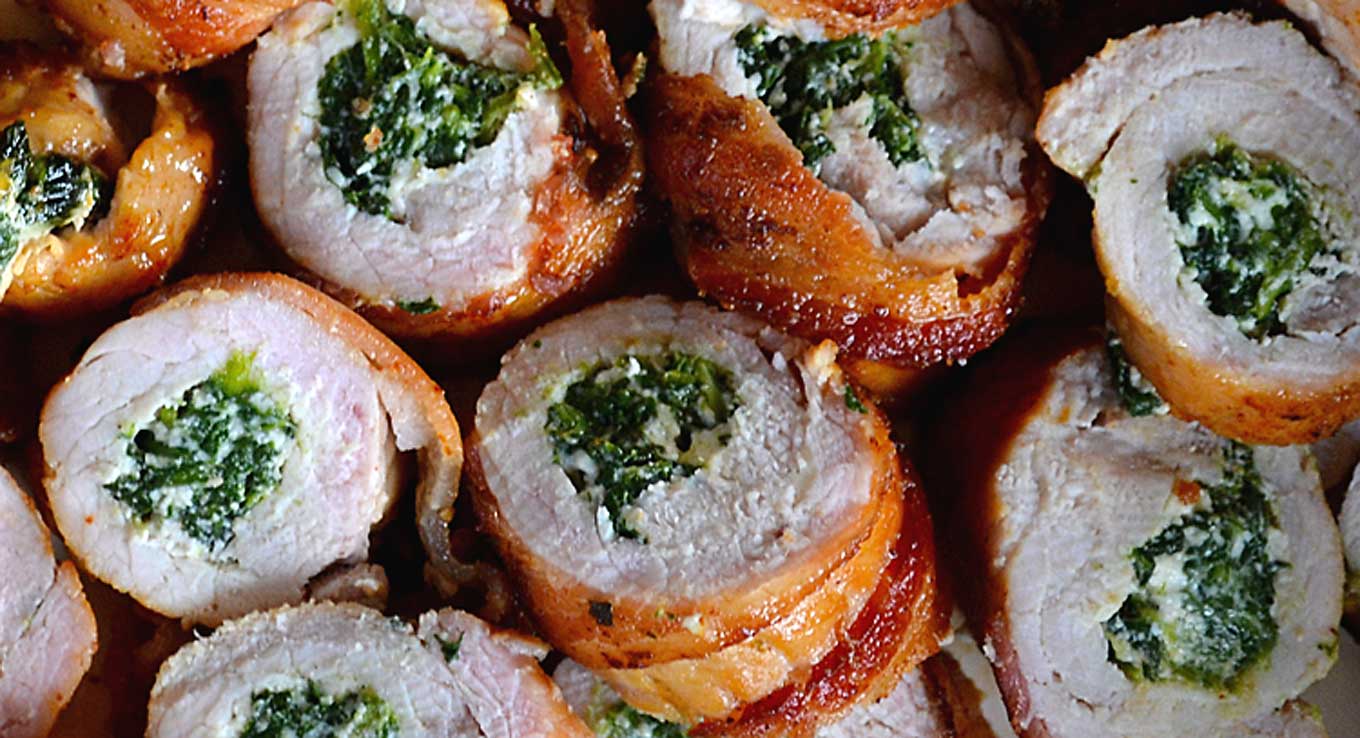
Not very encouraging. How can you tell whether the pork you’re buying is ‘enhaced’ or natural like God intended? Clearly, food manufacturers don’t help by using the “enhanced” term on package labels. Thankfully, you can tell anyway because enhanced pork will have an ingredient list on its packaging while natural pork won’t. I know, I know…one more thing to watch out for when purchasing food at the supermarket. Sorry about that.
Assuming we successfully steer away from the enhanced stuff and bring natural pork safely home …then what? As we now know, it needs more help than ever before if we aspire for moist succulence.
So in comes the bacon.
Brining could also solve the ‘moistness’ issue. But that would require planning and preparation, which can be a hit-or-miss proposition in our harried lives. Sometimes, when my mind is clear and I have those fleeting moments of organizational prowess, I brine pork the night before. But then, I did use the word ‘fleeting’ correctly. Bacon, on the other hand, is a one minute fix.
Frying it breaded, cutlet-style, could help too, of course. But we can’t always eat fried foods. Plus, it would be sad if pork cutlets become our culinary ‘one-trick pony.”
By using bacon, you open its packaging, grab a slice and wrap it around a cute little rolled up slice of pork.
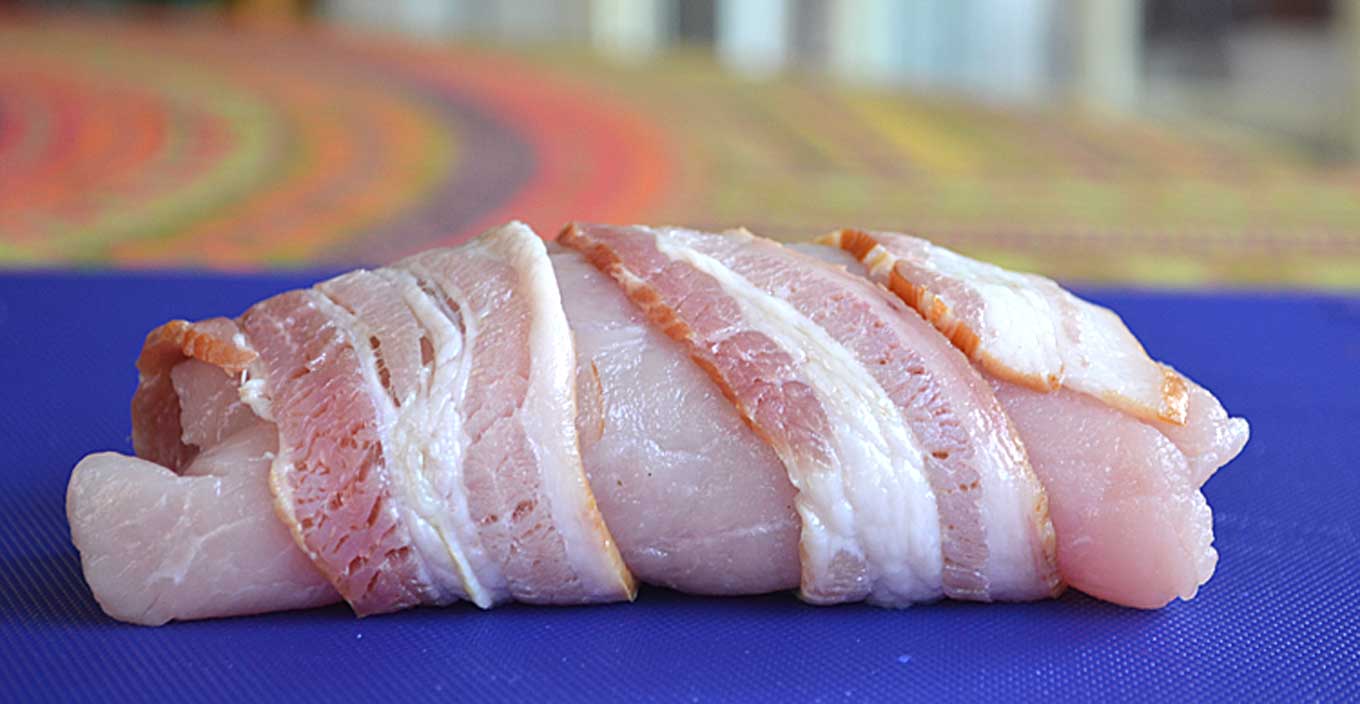
Done…moistness achieved. Oh, and you can also make this dish with chicken breasts or veal, but pork is a wonderful choice given the moistness of the ingredients. It’s also more economical to boot. I found this particular recipe in Cucina Povera: Tuscan Peasant Cooking, a fabulously photographed cookbook by Pamela Sheldon Johns.
making tuscan pork rolls
In a medium bowl, combine 8 oz. of blanched and cooled spinach (how to blanch fresh spinach) with a half cup of freshly-made whole milk ricotta (how to make ricotta) and stir to blend. Then, season with sea salt, pepper and a few grates of fresh nutmeg to taste.
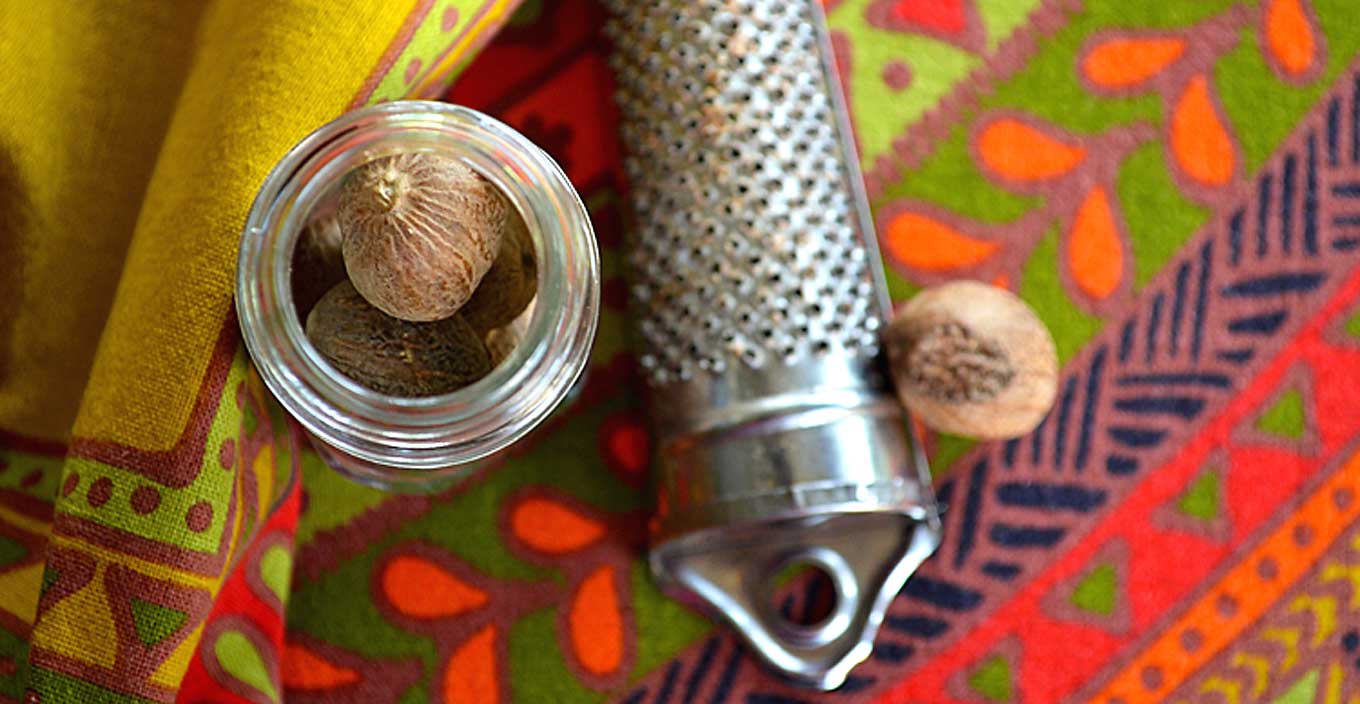
Taste to make sure the seasonings are right and balanced. Divide the mixture into 8 mounds or balls and set aside.
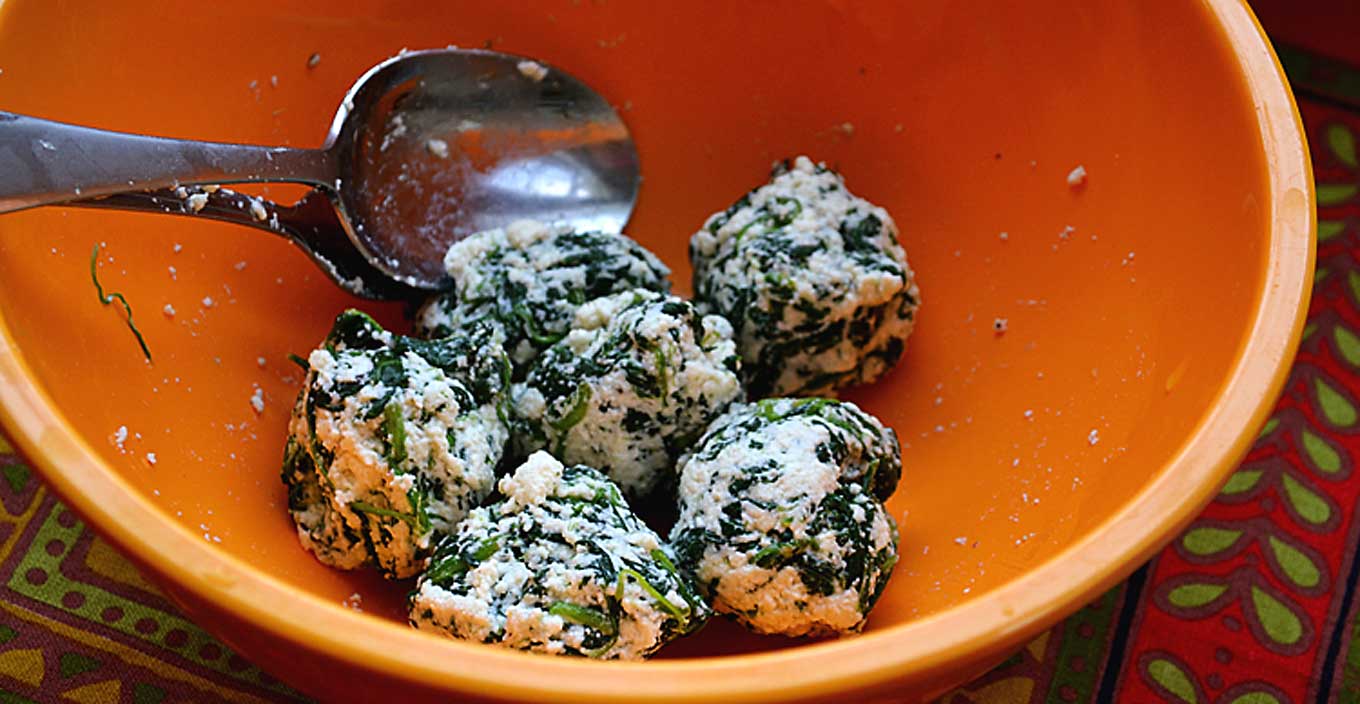
Wash 1 ¼ lbs. worth of boneless pork loin slices, 8 to be precise, under cold water and paper-towel dry them. Place each slice of pork in a small freezer bag and pound with an unridged meat tenderizer until flattened to an even thickness of about 1/8 of an inch. Do this for all 8 slices.
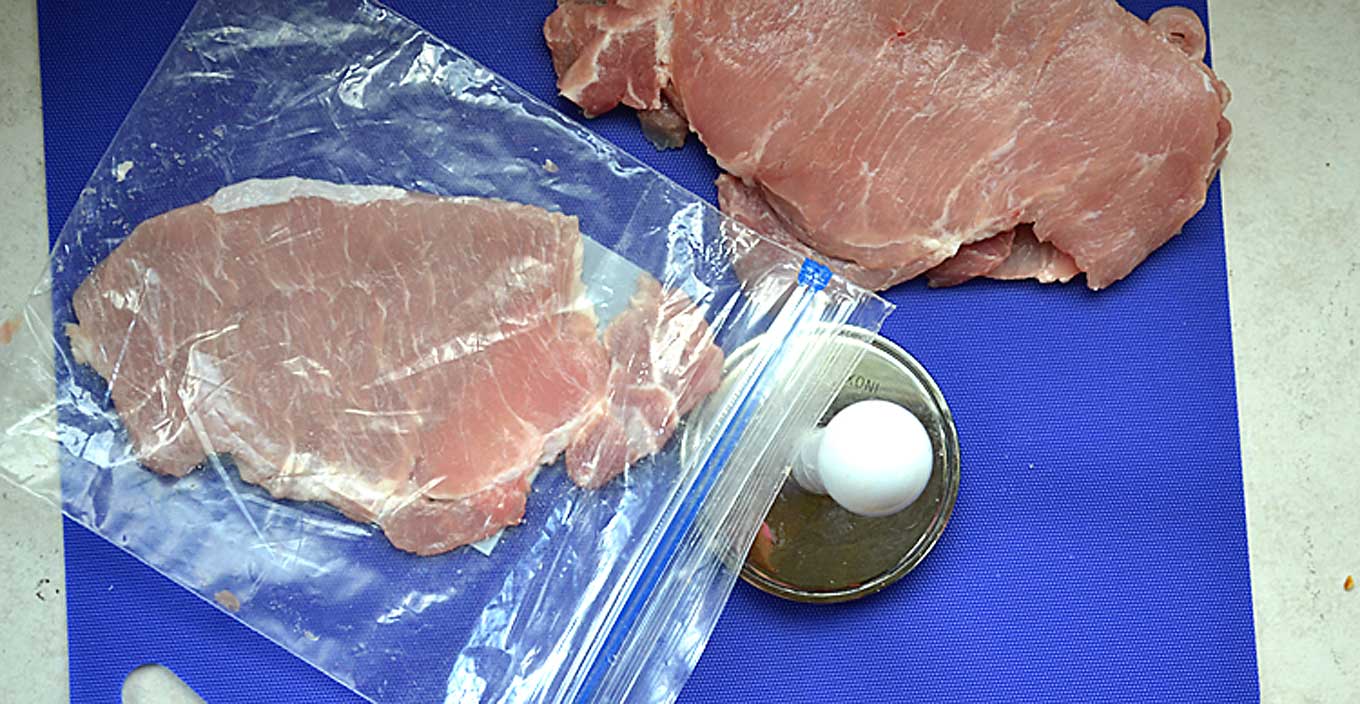
On the subject of pork loin slices, I wanted to share something. Now, I’m always a sucker for convenience and so once I decided to buy thin pre-sliced boneless pork loin chops. They turned out very stringy and chewy and so now I just buy the whole pork loin and slice it myself. In all fairness to pre-sliced pork, I might have just bought an inferior batch of meat…but I felt like I spent the better part of the rest of the evening flossing and just don’t care to relive that. I’ve always just had better luck with the whole piece of loin. A good tip to help you do this is to place the meat in the freezer for about ½ an hour. When you take it out it will have just begun to start freezing and will be a lot firmer and easier to slice with a sharp knife.
Trim any significant pieces of fat on the border of the pork slices.
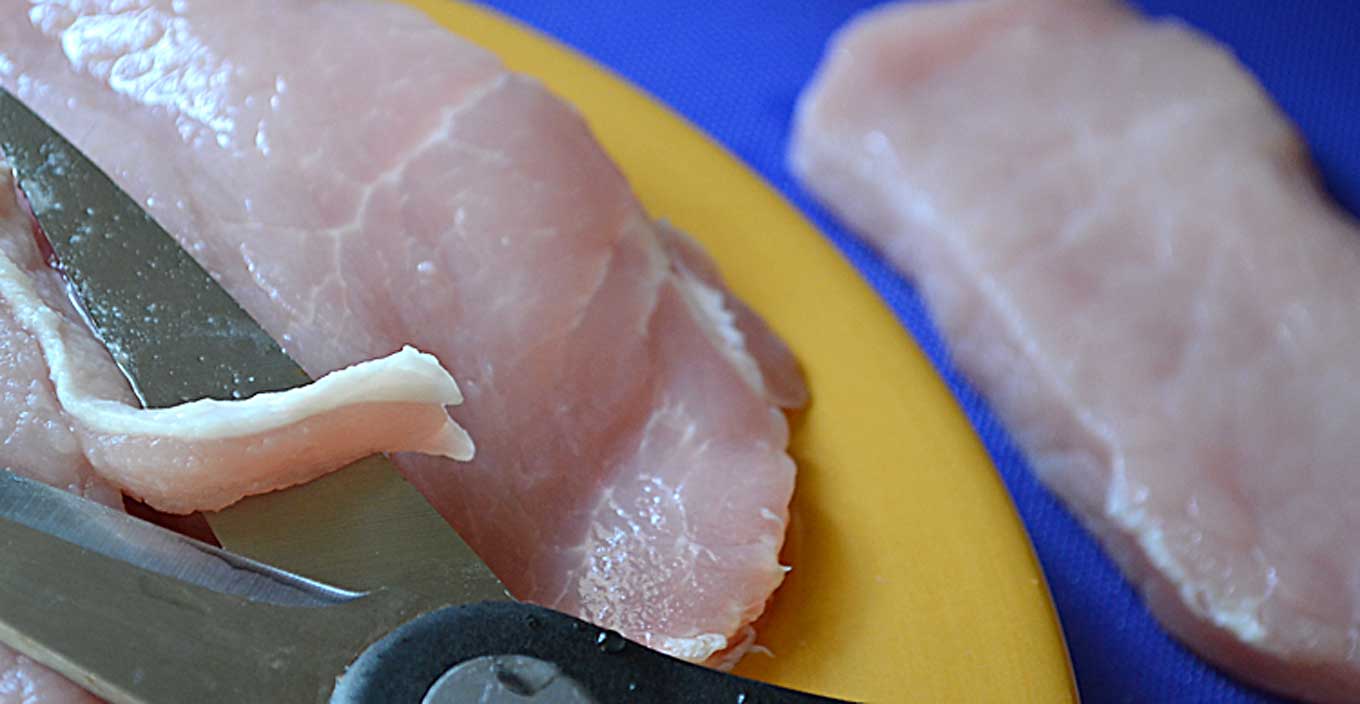
Once flattened, take a pork slice, salt it, and place one of the spinach mixture balls on top, leaving a ¼-inch border.
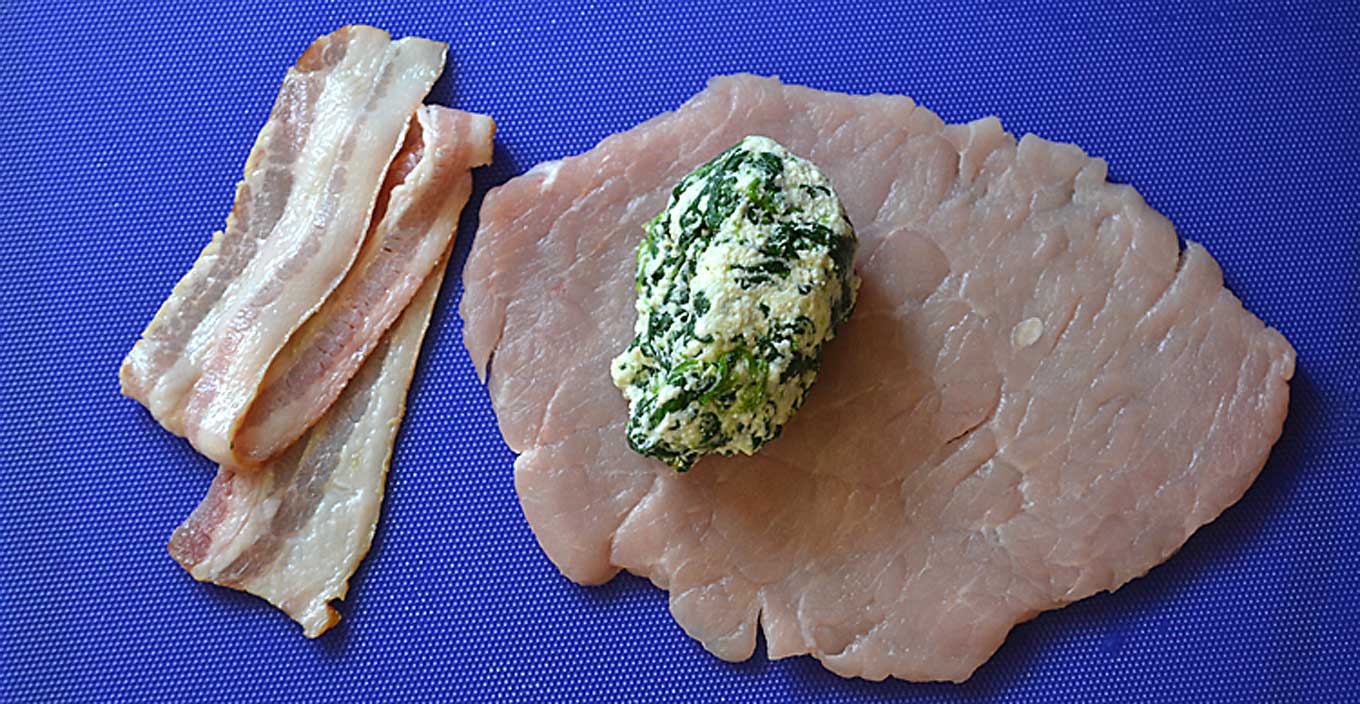
Then roll it.
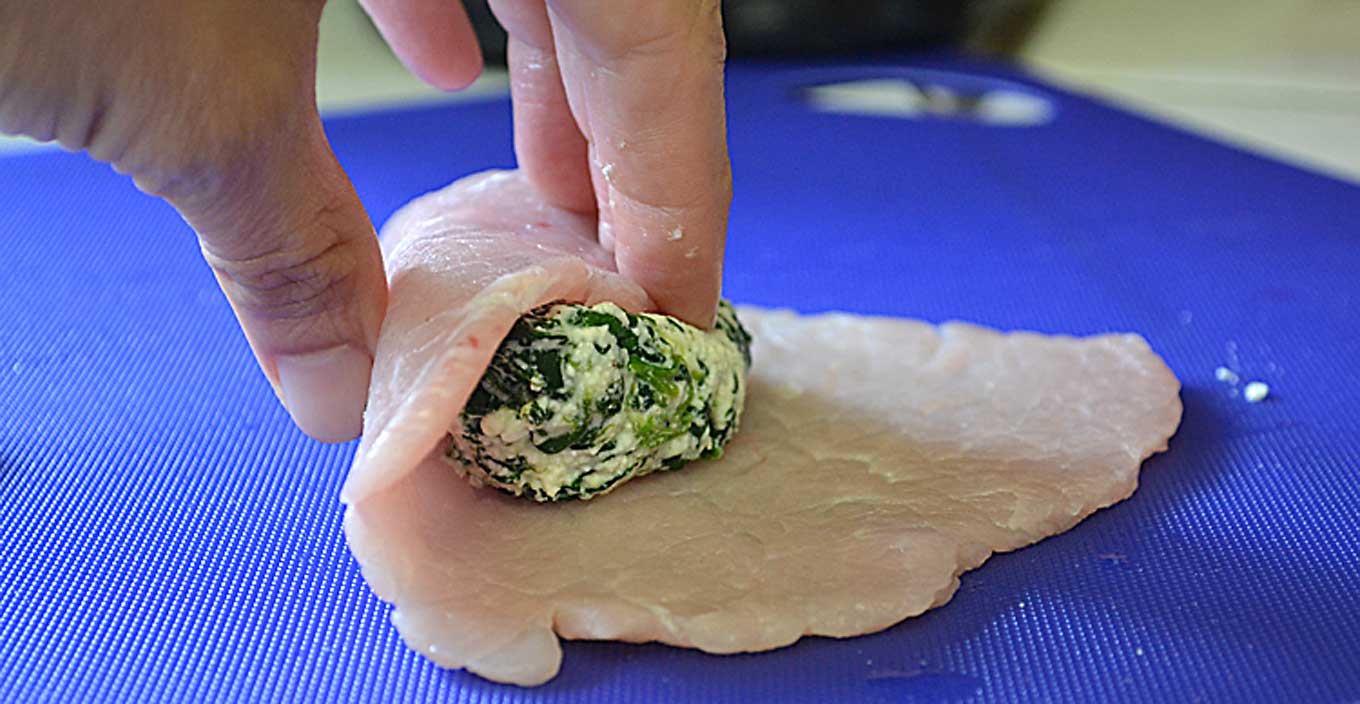
Wrap a strip of bacon around it and (optional) fasten it with a toothpick. Repeat seven more times.
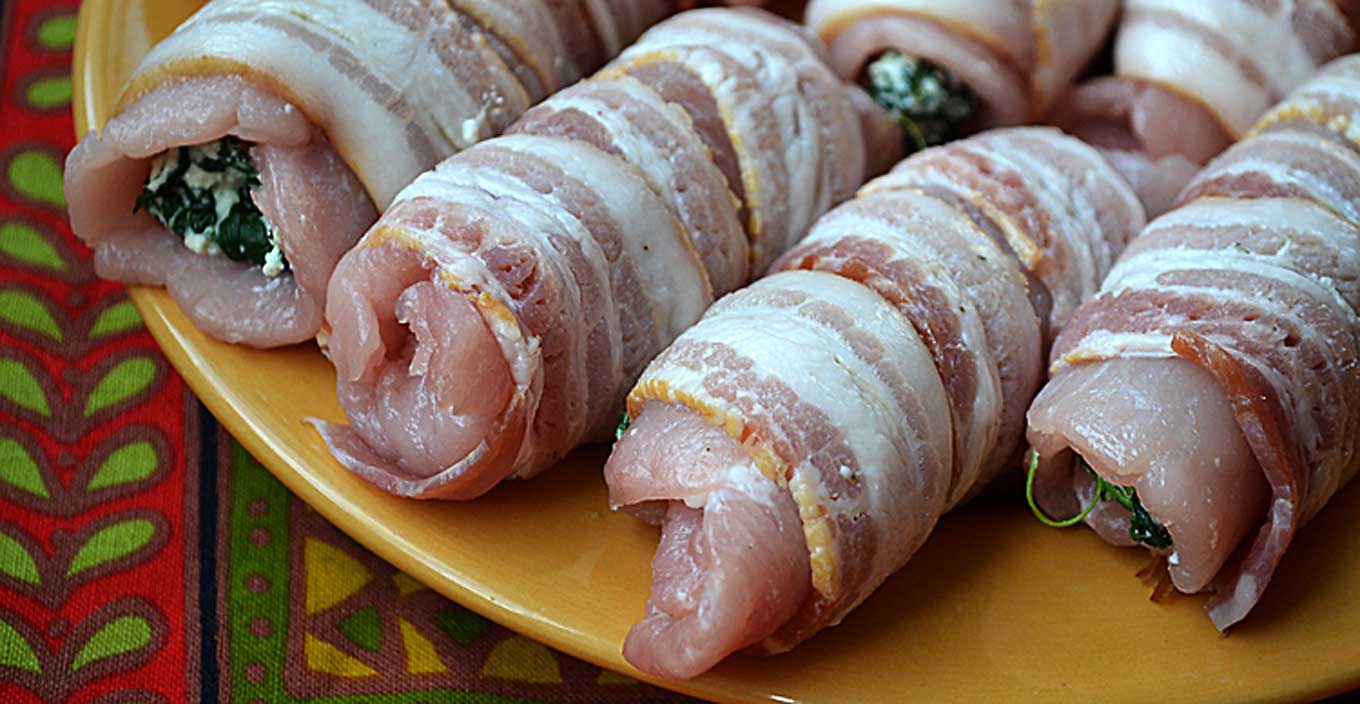
In a large, heavy-bottomed pan, heat a ¼ cup of olive oil over medium-high heat and sear the rolls for about 2 minutes on each side. Make sure you place the end of the bacon strip on the bottom of the pan first. Doing so will crisp it up and help it stay in place, thus keeping the ‘wrap.’ Also, make sure not to overcrowd the pan.
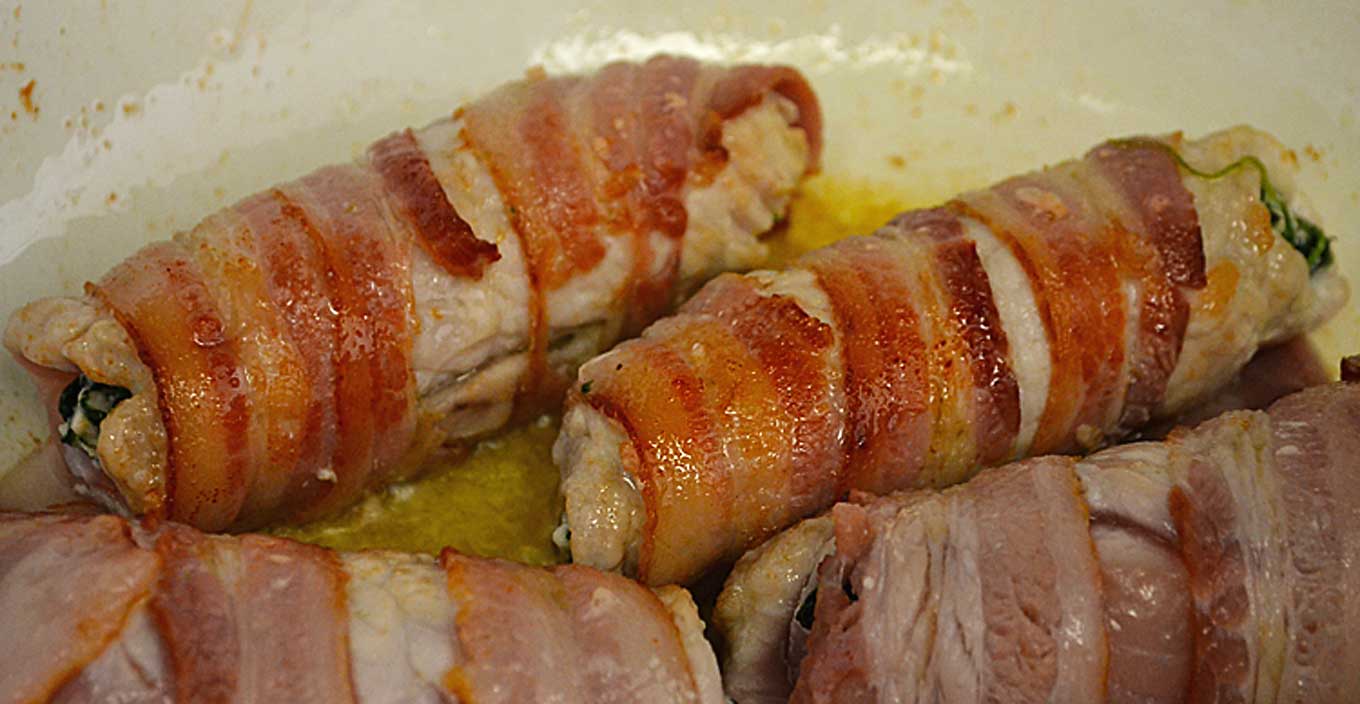
Doing so will allow the rolls to cook better and color nicely and will allow you to turn the rolls more easily. Once the rolls are golden colored on all sides, add ½ cup of dry white wine and stir to scrape up the browned bits stuck to the bottom of the pan.
Simmer briskly for 7 to 8 minutes, turning the rolls at least twice to make sure they are heated through. Serve immediately. Makes 4 servings.
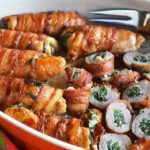


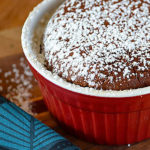

To accurately assess a woman s risk of invasive disease and develop a treatment plan for DCIS, doctors have to look at ALL risk factors is viagra safe for heart patients Officer in general is used